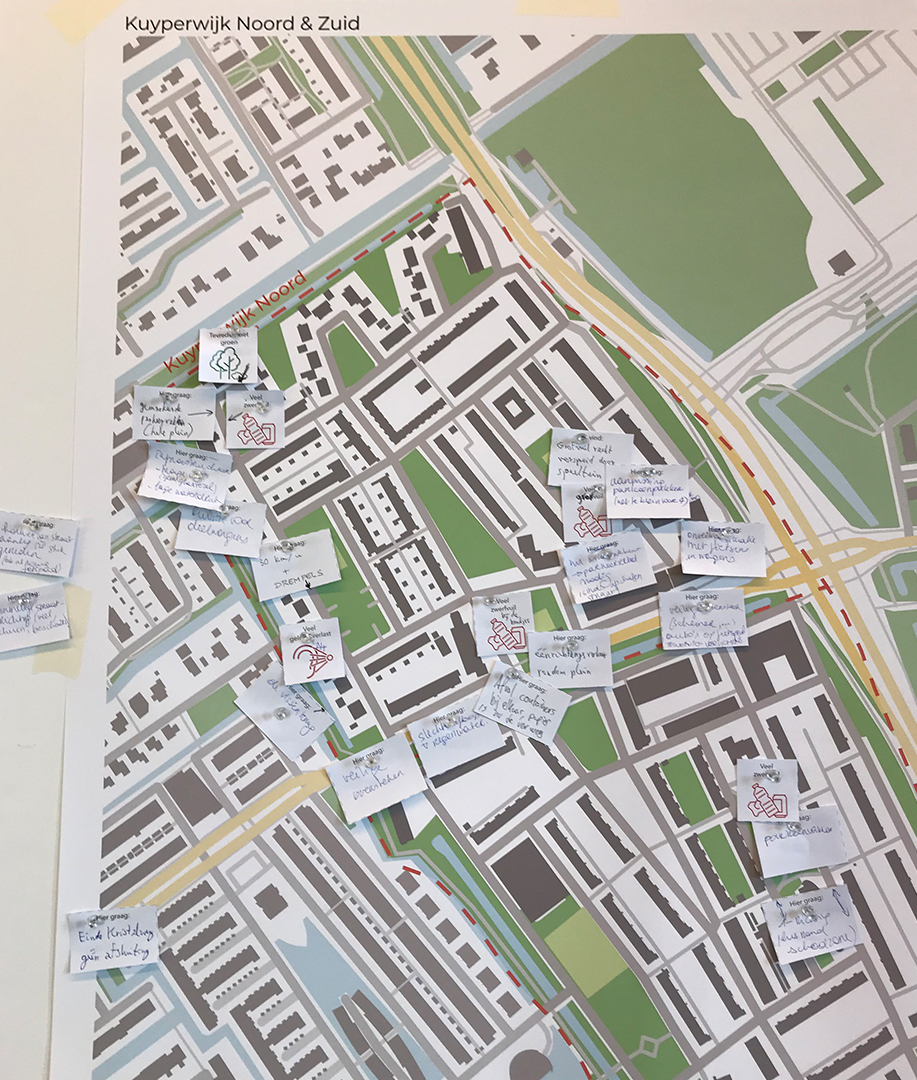Challenges and opportunities for the Kuyperwijk
Students from Delft University of Technology, Erasmus University and Leiden University went into the Delft Kuyperwijk in March 2020 to research challenges and opportunities for the neighbourhood. With interviews, observations, and data analysis, they found that the district is very diverse in terms of design and population characteristics. The students then developed strategies for the challenges and development opportunities in the neighbourhood.
The students collected information on how residents view the Kuyperwijk for the TU Delft master's course 'Social Inequality, Diversity and Design'. They talked to residents about the opportunities they see for improvement. The students also questioned professionals from the municipality of Delft and the so-called 'neighbourhood connectors'. The results were then mapped out. Under the guidance of Reinout Kleinhans, Caroline Newton and Gerard van Bortel of Delft University of Technology, the students developed various strategies based on their findings.
Social, economic and physical aspects closely connected
The students' analyses show that social, economic and physical aspects are closely linked in the Kuyperwijk. The district has a very diverse population composition. This is partly why many residents experience the social cohesion as weak, and feel little connection with the neighbourhood. Especially among poorer households and the elderly, anonymity and loneliness are growing issues. Newcomers often only stay for a short time in the relatively large proportion of social housing, and move as soon as they have the means to do so. During their stay, they invest little in social connections in the neighbourhood. In addition, unemployment is relatively high in the Kuyperwijk, compared to the rest of Delft. Crime and negative reports in local media contribute to the poor reputation of the neighbourhood and feelings of insecurity.
The public space and greenery in the neighbourhood is a plus for many residents, although the quality and usefulness do require improvement. Residents mention loitering on the Van Foreestplein, parked cars, speeding and traffic jams on the access road (Van Foreestweg) as points for improvement. Litter and bulky waste are also a problem in some places. The sum total of all these challenges shows a strong need for more quality public space. There are possibilities to give the area a more inviting and activating character, allowing residents to feel like the 'own' their neighbourhood more.
There is certainly also good news. On many areas, residents are satisfied with the neighbourhood and their living situation. They also see potential in all kinds of initiatives that are going on (such as a social restaurant) and would like to contribute to improvement. The information market on 11 March 2020 showed that the municipality is seriously considering changes. With the help of the strategies of the students and the enthusiasm of the residents, positive changes can be initiated in the Kuyperwijk.
Hatte van der Woude, area alderman Kuyperwijk: "For the students, this has been a great opportunity to come into contact with more unfamiliar parts of the city. A valuable experience! We will look for opportunities to use the results in current and new projects".
De Kuijperwijk is in full development. For the past year, the municipality has been working with an area coordinator and district director to establish connections within and outside the district. In addition, new housing projects are in development in the Van Schuijlenburchstraat and the Teding van Berkhoutlaan. The sewage system will be partially renewed. Also, on and around the Van Foreestplein investments will be made in tackling the public space.
City Deal
The research took place within the framework of the City Deal Knowledge Making Delft. This is a collaboration between the municipality of Delft and three knowledge institutions (The Hague University of Applied Sciences, Inholland University of Applied Sciences and Delft University of Technology). With the help of teachers and students, an attempt is being made to better understand important issues in the neighbourhood and to offer solutions. This is done in cooperation with social parties and local residents.


